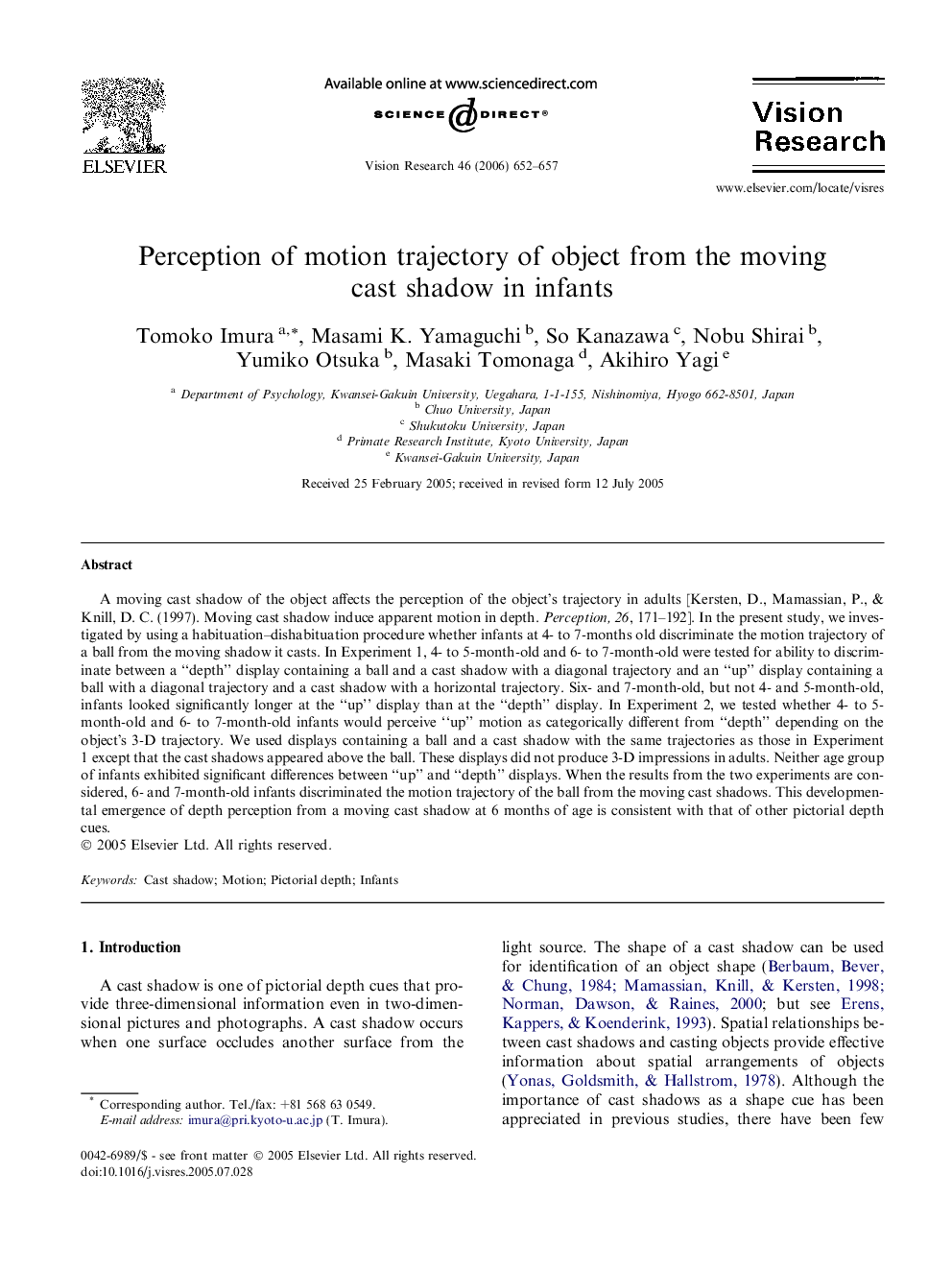| Article ID | Journal | Published Year | Pages | File Type |
|---|---|---|---|---|
| 4035829 | Vision Research | 2006 | 6 Pages |
A moving cast shadow of the object affects the perception of the object’s trajectory in adults [Kersten, D., Mamassian, P., & Knill, D. C. (1997). Moving cast shadow induce apparent motion in depth. Perception, 26, 171–192]. In the present study, we investigated by using a habituation–dishabituation procedure whether infants at 4- to 7-months old discriminate the motion trajectory of a ball from the moving shadow it casts. In Experiment 1, 4- to 5-month-old and 6- to 7-month-old were tested for ability to discriminate between a “depth” display containing a ball and a cast shadow with a diagonal trajectory and an “up” display containing a ball with a diagonal trajectory and a cast shadow with a horizontal trajectory. Six- and 7-month-old, but not 4- and 5-month-old, infants looked significantly longer at the “up” display than at the “depth” display. In Experiment 2, we tested whether 4- to 5-month-old and 6- to 7-month-old infants would perceive “up” motion as categorically different from “depth” depending on the object’s 3-D trajectory. We used displays containing a ball and a cast shadow with the same trajectories as those in Experiment 1 except that the cast shadows appeared above the ball. These displays did not produce 3-D impressions in adults. Neither age group of infants exhibited significant differences between “up” and “depth” displays. When the results from the two experiments are considered, 6- and 7-month-old infants discriminated the motion trajectory of the ball from the moving cast shadows. This developmental emergence of depth perception from a moving cast shadow at 6 months of age is consistent with that of other pictorial depth cues.
